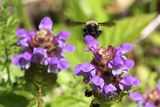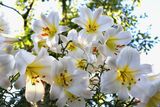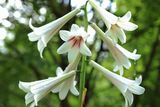Diarmuid Gavin: Get your garden singing the blues with Ceanothus
This tropical-looking shrub is easy to care for, attracts pollinators and is a real summer showstopper



There are some shrubs that are omnipresent. Spring explodes and we see that, in almost every garden we visit or pass, there’s a forsythia, a flowering currant and some style of viburnum. For much of the year, they blend into the background, green wallpaper. But with daylight hours increasing and soil temperatures warming up, many shrubs are enjoying their annual moment in the spotlight.
Chief among them is Ceanothus. A woody plant smothered in bright-blue flowers sounds like something you’d see in a tropical island but we are fortunate enough to be able to grow these here due to our temperate climate.
Known as the Californian lilac tree, it’s native to the USA and Mexico and further south to Guatemala. Its origins along the Pacific coast are far-flung but it’s quite at home on our Emerald Isle. Despite its ubiquity, it is a plant to be celebrated. It invites so many pollinators into the garden and it can stop traffic with its dazzling beauty in full flower.
There are over 55 species and many more cultivars. They are mostly evergreen and, with handsome foliage, many can look good all year round. Some are deciduous — ‘Gloire de Versailles’, with large panicles of pale-blue flowers, is the most popular deciduous variety and a good choice for more exposed areas as it is less susceptible to wind and frost damage.
They mostly bloom from late spring through to summer for around six weeks, though there are some that do so in later summer to early autumn such as ‘Autumnal Blue’, one of the hardiest evergreen varieties with rich, sky-blue flowers.
At home in the shrubby rocklands of California, they require full sun and good drainage. In more exposed situations, they can be trained against a south-facing wall which will provide the warmth and protection they require. They perform on most soils except shallow chalky ones — yellowing of the leaves is a sure sign they are in trouble. Their ability to tolerate salt-laden winds makes them good choices in coastal areas.
Read more
There is quite the range of blues to choose from, including powder-puff blue to the deepest azure of the Mediterranean in summer. My favourite is ‘Puget Blue’ with its intense sapphire-blue flowers. Other popular varieties include ‘Victoria’ and Skylark’. There are also pink (‘Perle Rose’) and white varieties (‘Snow Flurries’) but I think Ceanothus provides some of the best garden blues available.
They’re easy care and won’t require much in the way of pruning. If you do, go very lightly with the evergreen varieties or they won’t recover, and prune deciduous ones lightly. They’re not the longest-living shrubs and can lose vigour and blooming quality after 15-20 years — in this case, it’s time to go and get yourself another one.
Plant of the week
Trillium grandiflorum
Trillium grandiflorum (Wake Robin) Trillium is a striking woodland plant that comes into flower in spring — it has three leaves and three-petalled, elegant white flowers. It enjoys a shady spot and preferably moist but well-drained, acid-to-neutral soil. Trillium chloropetalum is another beauty which has mottled leaves and blood-red flowers.
Reader Q&A
Can you help identify this pink flowering plant please? I left it behind when I sold my house but I haven’t succeeded in replacing it. I found it in the succulent section and, from memory, it had the word star in the name. Maura
Delosperma cooperi
This looks like Delosperma cooperi, also known as the ‘Ice Plant’. It has succulent-type foliage that tends to sprawl and spread like a mat and wonderful magenta pink flowers. There are some cultivars such as ‘Stardust’ and ‘Peach Star’ but the petal colours would not match your one.
Submit your gardening questions to Diarmuid via his Instagram @diarmuidgavin using the hashtag #weekendgarden
Join the Irish Independent WhatsApp channel
Stay up to date with all the latest news


















